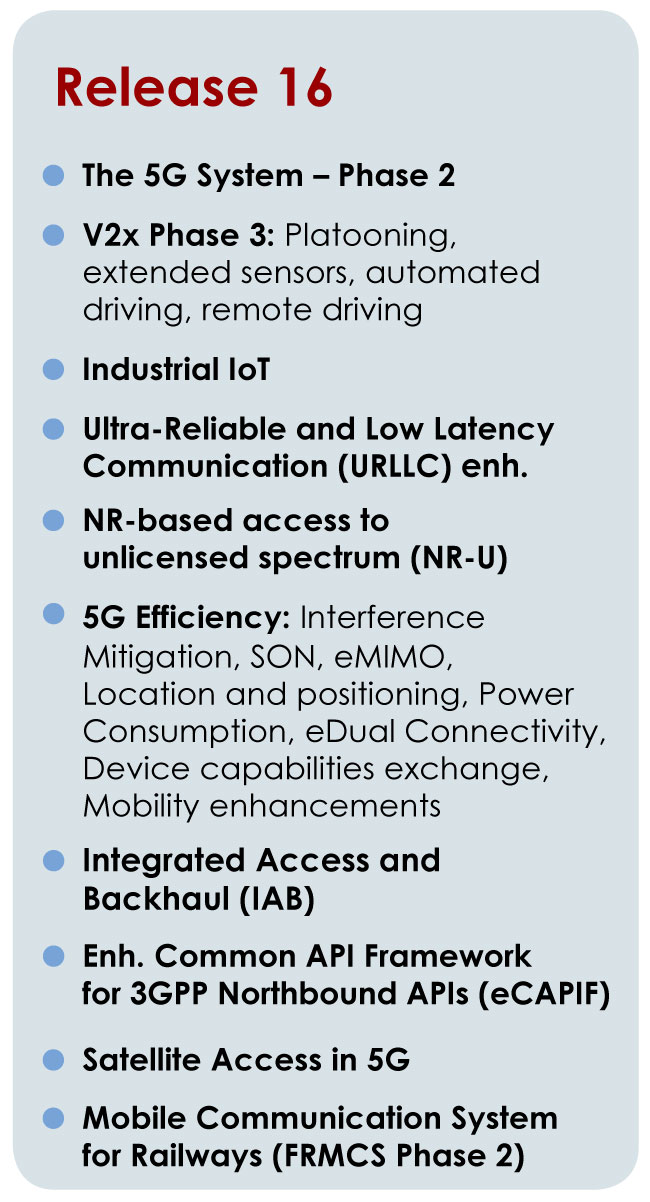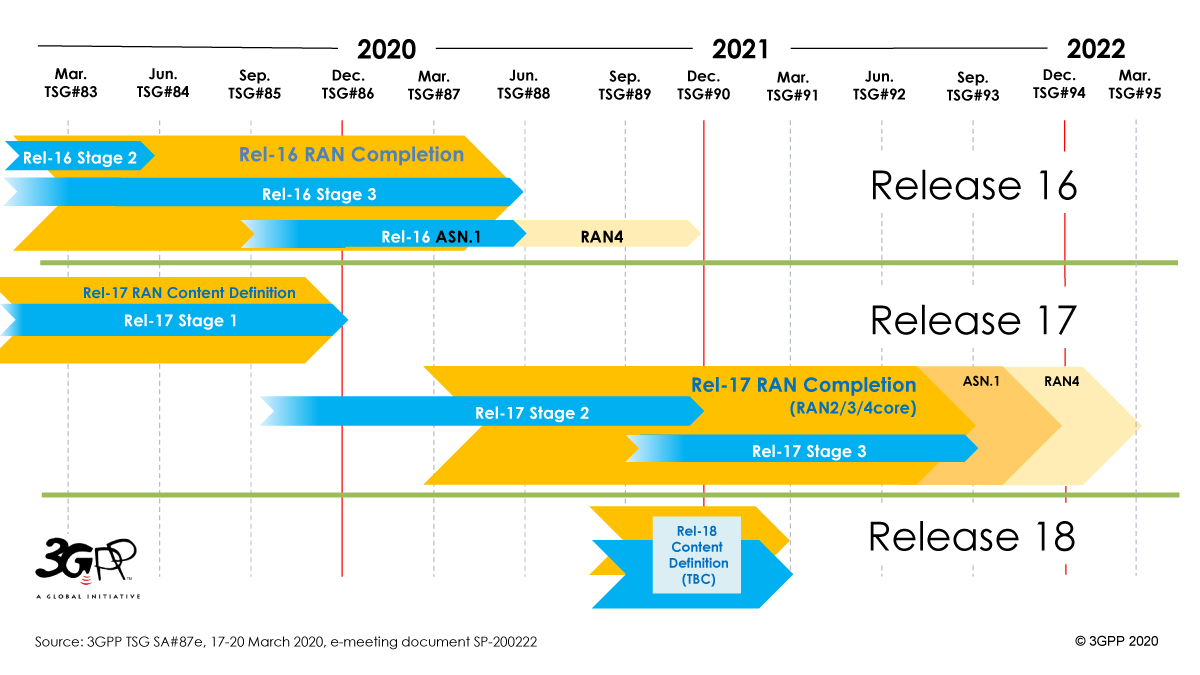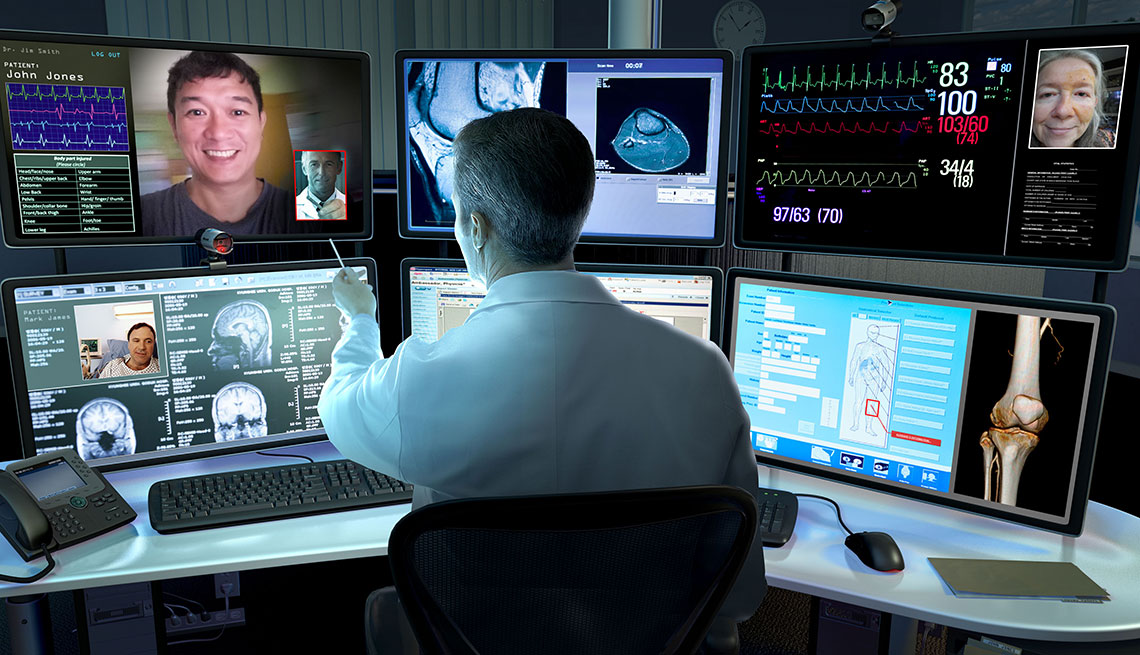First Responders
Verizon and Ericsson proof-of-concept trial of Integrated Access Backhaul (IAB) for 5G mmWave network
Today, Verizon and Ericsson announced the successful test of an alternative wireless solution for fiber backhaul: a battery-powered millimeter wave (mmWave) cell site that can be rapidly deployed for wireless 5G network backhaul, while awaiting permanent fiber or power cabling to be installed. The technology trialed can also be used for quick cell site deployments (without fiber backhaul) in emergency mobile communications with first responders.
For years, regulatory approvals, permitting, licensing for small cells coupled with long times for physical installation of fiber for cell backhaul builds, have slowed down 4G-LTE deployments. Given the dramatic increase in cell sites (macro and small) required to build out 5G (especially mmWave with its short range), this deployment bottleneck will get a whole lot worse. Verizon refers to its mobile 5G network as “5G Ultra Wideband.”
……………………………………………………………………………………………….

Verizon 5G mm Wave Cell being installed. Photo Credit: Verizon
The Verizon/ Ericsson trial used Integrated Access Backhaul (IAB) technology, which Verizon said last year would be a key tool to expanding its emerging (pre-standard) 5G mobile network.
Verizon IAB uses airlink (aka cellular) connections over mmWave spectrum instead of fiber for part of the wireless signals journey from the user to the (4G or 5G) core of the network. It dynamically allocates a portion of bandwidth for consumers to send data to base stations/small cells and another portion for the cells to connect with the core of the network.
Using mmWave with IAB for both parts of the connection (cell to/from device AND cell to/from 4G-5G core) obviates the immediate need for fiber backhaul. However, when fiber has been installed and lit, it can replace the portion of the wireless network delivering data to the 4G/5G network core. That’s because the millimeter wave spectrum allocated to wireless backhaul can be reallocated for cell to/from wireless device connections once the fiber backhaul infrastructure is in place. That simultaneously boosts both device access speeds and network performance.
IAB is a smart use for millimeter wave spectrum, which prior to the 5G era was widely viewed as unusable for consumer devices and instead was used for applications like line of sight, point-to-point high speed Internet access.
“Fiber is the ideal connection between our network facilities,” said Bill Stone, Verizon’s Vice President of Planning, in a press release. “It carries a ton of data, is reliable, and has a long roadmap ahead as far as technological advancements. It is essential. However, this new IAB technology allows us to deploy 5G service more quickly and then fill in the essential fiber at a later time.”
In an email exchange with RCR Wireless, Karen Schulz, a spokesperson for Verizon, provided further insight into Stone’s comment regarding the role that IAB technology will ultimately play in Verizon’s 5G network.
“We have another phase of trials coming up that will incorporate multi-hops,” Schulz told RCR Wireless. “That is our next step leading to commercial deployment.”
She added that the plan is to actively use IAB as an “acceleration tool” in Ultra Wideband service deployment within UWB footprints.
“Meaning,” she explained, “that it will help us get 5G sites on the air more quickly […] but we do not intend to use the airlink indefinitely. It will help us speed the deployment of cell sites and we will use the airlink for backhaul until we are able to run fiber to the site.”
“Ericsson’s microwave and fiber mobile transport solutions are an important enabler for 5G services,” said Ulf Forssen, Head of Standards & Technology, Development Unit Networks, Ericsson. “This IAB proof of concept demonstrates a complementary solution, enabling faster deployment of the high-quality, high-performance 5G transport needed in a 5G world.”
……………………………………………………………………………………………….
New resources for first responders:
Verizon said that the proof-of-concept also demonstrated that mobile cell sites, which often are deployed during emergencies, can be served by IAB:
In addition to bringing new cell sites on air more efficiently, this proof-of-concept trial showed that mobile cell sites can also be connected using IAB. This becomes a critical asset for first responders and public safety agencies who need temporary cell coverage for search and rescue operations, disaster recovery efforts or other emergency situations. Verizon owns a fleet of mobile cell sites which are regularly deployed for these situations. However, until recently they have required a fiber connection to carry data, restricting where they can be deployed, or a satellite connection, which are limited and costly. Now, with IAB technology, coupled with portable generators for power, cell sites can be deployed more rapidly and to a wider range of locations.
“When our first responders need us, we will be there with the resources they need to accomplish their mission critical work,” said Stone. “IAB technology gives us many more options to ensure communications resources are where our first responders need them anytime they call on us.”
…………………………………………………………………………………………………….
Author’s Note:
IAB is a component of the 3GPP’s Release 16, which was frozen on July 3, 2020.


IAB doesn’t seek to replace traditional and fiber connections between cell towers, which enable massive quantities of data to be transmitted over networks. Instead, it enables wireless carriers the ability to set up a completely mobile 5G cell site in an area that doesn’t yet have power and/or fiber.
That could give first responders immediate access to 5G’s ultra high bandwidth and low latency for emergency drone operations or video conferences, while Verizon or other carriers work with partners and local governments to install permanent wired infrastructure.Verizon notes that while it’s still betting heavily — billions of dollars — on fiber, IAB will enable it to launch 5G services faster at specific locations, “then fill in the essential fiber at a later time.”
…………………………………………………………………………….
Appendix: 5G mmWave Frequencies:
Based on ITU-R WRC 19 conference recommendations, ITU-R WP5D is revising of Recommendation ITU-R M.1036-6: Frequency arrangements for implementation of the terrestrial component
of International Mobile Telecommunications in the bands identified for IMT in the Radio Regulations.
The new spectrum added will include the following mmWave frequencies, which are likely to be used with the forthcoming IMT 2020.specs standard:
Frequency arrangements in the bands: 24.25-27.5 GHz, 37-43.5 GHz, 45.5-47 GHz. 47.2-48.2 GHz, 66-71 GHz. Those mmWave frequencies will all use unpaired TDD for duplex operation, i.e. separation of input/output transmissions over the same frequency bands.
References:
Verizon, Ericsson test IAB as an ‘acceleration tool’ for 5G deployment
Verizon and Ericsson test instant 5G cell towers for emergencies
Highlights of Cisco Roundtable: Expanding the Internet for the Future: Supporting First Responders and Society at Large
The agenda at Cisco’s April 28th roundtable “Expanding the Internet for the Future, Today: Supporting First Responders and Society at Large,” was focused on how the coronavirus is impacting our use of the internet from expanded online learning for students and adults alike to increased telehealth platforms (more on this subject below).
The discussion featured guest panelists including representatives from AT&T, Comcast, Cox Communications, Facebook, Verizon, and the University Texas-Gavelston Medical Branch. The panelists first took turns giving their individual perspectives on the current state of the internet before shifting focus on innovating to meet the demands of the future.
The conference opened with host Jonathan Davidson, senior vice president and general manager, Mass Scale Infrastructure Group at Cisco sharing some choice illustrative Cisco Webex data. So far this month, Cisco has hosted more than 20 billion virtual meeting minutes. For perspective, that is up from a mere 14 billion last month. These March 2020 totals doubled the meeting minutes from February. Around the globe, traffic appears to be leveling off or decreasing from recent highs.
Speakers included AT&T’s FirstNet SVP Jason Porter (a long time colleague and September 2020 IEEE ComSocSCV workshop speaker) and Andrés Irlando, president of Verizon’s “public sector” that sells services to public-safety officials.
Almost all roundtable participants said they have been working overtime during the past few weeks to make sure doctors, nurses and other medical professionals and first responders remain connected as they fight COVID-19. “This was like a fire, flood and tornado in every single city at the same time,” said AT&T’s Porter commented on the demand for FirstNet services. Jason and other speakers said their networks have managed to meet that demand, and that traffic growth is beginning to plateau.
However, “this gives us a peak at what the future looks like,” argued Verizon’s Irlando, explaining that traffic likely will start to decline as most Americans return to work, but some things won’t return to the way things were.
…………………………………………………………………………………………………………………………………………………………
Cisco has a website to help healthcare providers transition to virtual healthcare. There you will find resources for scheduling, conducting, and joining virtual consultations between Doctors and patients.

Telehealth and complex video session between Doctor and Patient
…………………………………………………………………………………………………………………………………………………………
During the second half of the roundtable, panelists each shared the vision on ways to revolutionize the current model to provide access for people around the globe. Ideas ranged from the importance of government subsidies when it comes to building this infrastructure in some areas, to reverse auctioning portions of spectrum to cover more isolated communities. Facebook Vice President of Connectivity Dan Rabinovitsj floated the idea of allowing spectrum sharing in more remote areas without facing fines as well as the idea of utilizing the recently opened 6 GHz band for internet access around the globe. As individuals posed questions, Cisco executive Stephen Liu touched on the idea of a flexible consumption system to revolutionize the traditional service model.
“This allows Service Provider customers to procure equipment fully loaded with all the bandwidth they need, but only pay for what they use based on licensing. That way, if surges occur such as what happened with COVID-19, the capacity can be added immediately and paid for at a later time. The licenses can be pooled as well so that capacity could be moved from lower traffic areas into high traffic areas,” Liu said.
A huge problem for telehealth is insurance coverage. Light Readings Mike Dano wrote in a blog post:
One of the biggest obstacles was how healthcare insurance, including Medicare and Medicaid, account for telehealth services. Prior to the pandemic, healthcare pricing generally discouraged the use of videoconferencing and phone calls for doctor’s visits, but new rules implemented due to COVID-19 now incentivize the practice, King explained.
In the telecom sector, the FCC is working to promote telehealth offerings. Earlier this month, the agency voted to adopt a $200 million telehealth program as part of Congress’ CARES Act.
……………………………………………………………………………………………………………………………………………………………….
Currently, billions of people remain without internet access despite efforts to close the digital divide. Today, Cisco published the “Cisco Inclusive Future Report 2020” estimating that bringing those currently with internet access online would increase the worldwide economy by nearly $7 trillion and “would lift 500 million people out of poverty.” More than one-third (35%) of people in developing countries lack access to the internet compared to 80% of individuals in more “advanced economies.” The report also discusses the problems inherent with so-called digital literacy meaning a person’s basic understanding of using the internet, one of the principal roadblocks preventing “digital inclusion.” Internationally, nearly one-quarter of adults lack such digital literacy.
As the coronavirus continues to take its toll on populations and economies around the globe, the inadequacies of our digital infrastructure have been thrust into the spotlight. Current barriers to internet access has innumerable disadvantages for humans and economies around the globe. As has been illustrated during this pandemic-induced grand digital experiment, a well-equipped digital infrastructure has far-reaching social and economic implications for humans around the globe.

References:
https://www.webex.com/webexremotehealth.html
Verizon Shows Benefits of “5G” for First Responders; 5G Fast Facts
Verizon gave first responders a look at 5G networks in action this week. Firefighters and police saw demonstrations of technology at a Verizon, New York city event. “You’re able to speed up,” Former New York Police Commissioner Bill Bratton said in a speech to first responders on Monday.
Augmented reality could give firefighters greater visibility and smart lighting on streets could help police more quickly track gunshots, among other potential advances.
5G Fast Facts:
- Verizon has launched its mobile 5G network in parts of Chicago and Minneapolis, and you can see the first Verizon 5G speed test results. The first compatible phone is the Moto Z3, which isn’t 5G-capable out of the box but can be retrofitted with 5G connectivity with a 5G Moto Mod you can order now.
- Samsung just released the $1,299 Galaxy S10 5Gflagship on Verizon’s 5G network. The device sports a 6.7-inch display and six camera lenses, including two with depth-sensing time-of-flight sensors for improved augmented reality experiences. We tested the S10 5G on Verizon in Chicago to take advantage of 5G speeds, and while the phone occasionally cleared 1 Gbps, our average downloads were 700 Mbps. However, the phone is markedly faster than an LTE Galaxy S10.
- LG is releasing a 5G phone of its own, the LG V50 ThinQ 5G, and it will debut on Sprint’s network for $1,152 on May 31. Sprint is currently taking preorders, but has not yet announced when its network will go live. Sprint is also selling a $600 5G hub from HTC, which will give LTE devices in your home 5G speeds when in Wi-Fi range of the hub.
- Sprint has announced a May launch for its 5G network in a handful of cities. AT&T is taking heat took heat for its 5G Evolution logo, which looks a lot like 5G, with speeds closer to 4G. T-Mobile is eyeing the second half of the year for its 5G push.
- Apple will reportedly wait until 2020 to release a 5G smartphone. The company participates in ITU-R WP 5D which is standardizing IMT 2020 Radio Interface Technologies (RITs).
- Qualcomm has said that 20 operators around the world will roll out 5G in 2019, including all major US carriers. Twenty device makers have committed to using Qualcomm’s 5G components in their devices.



